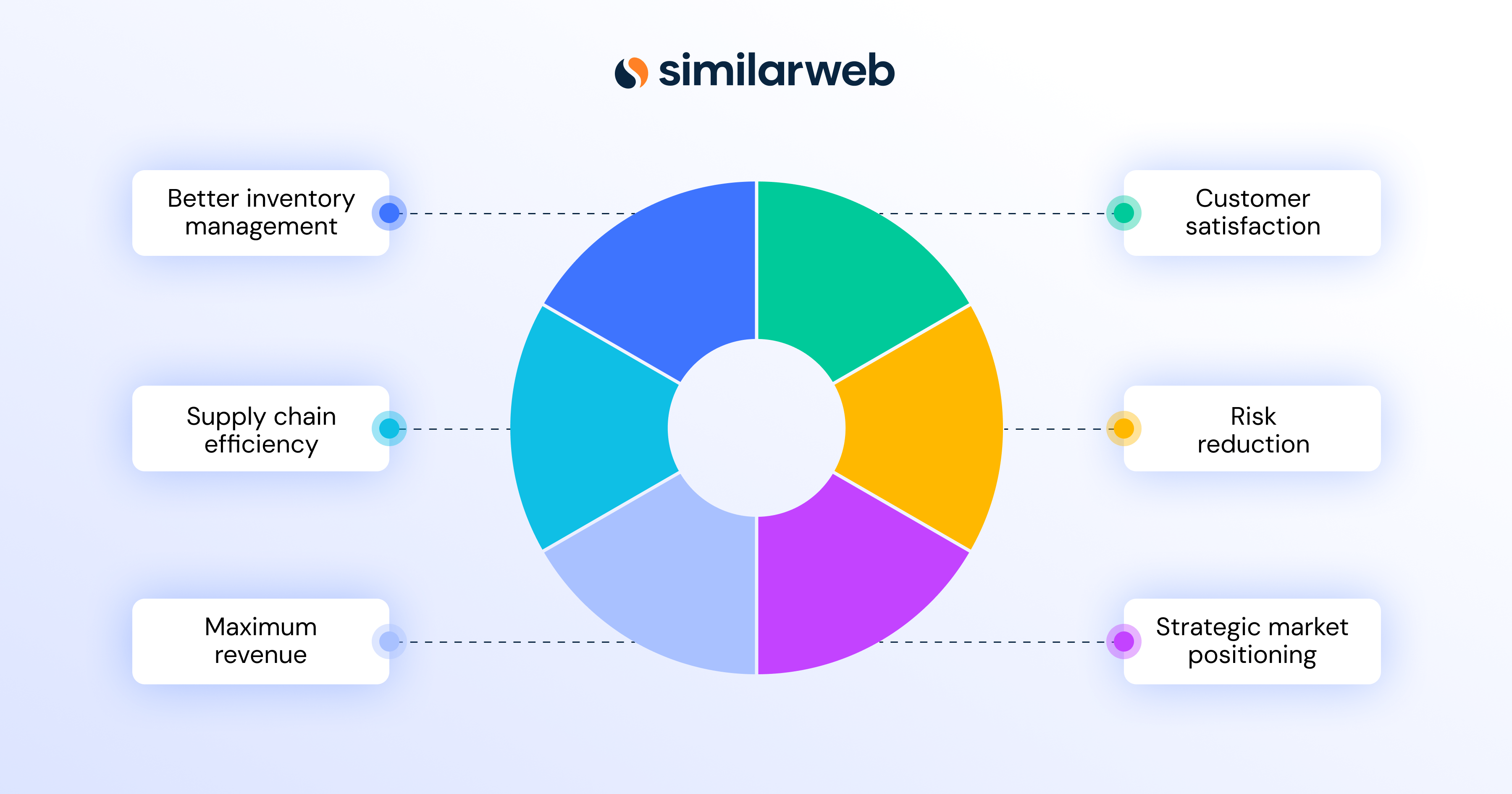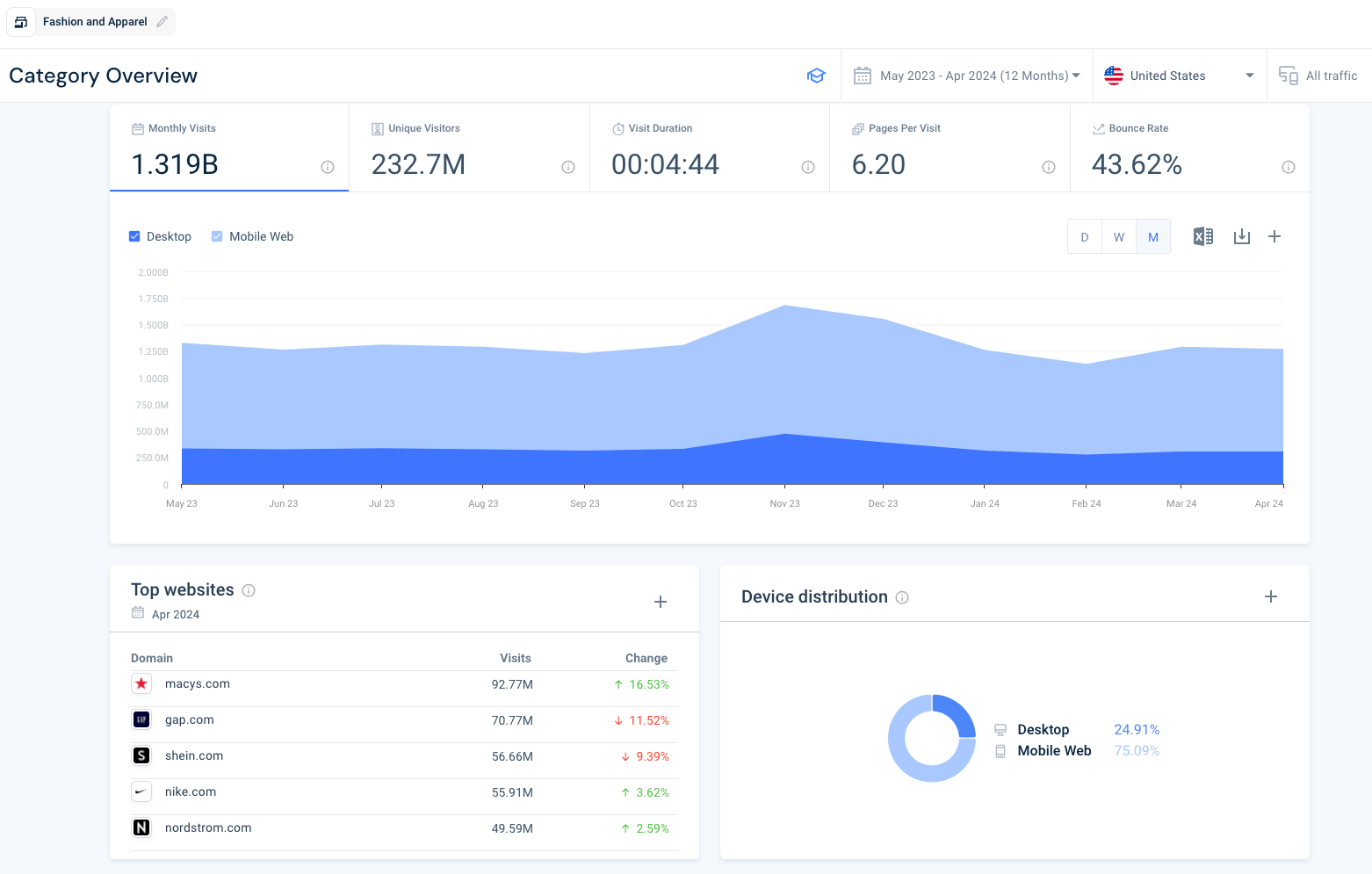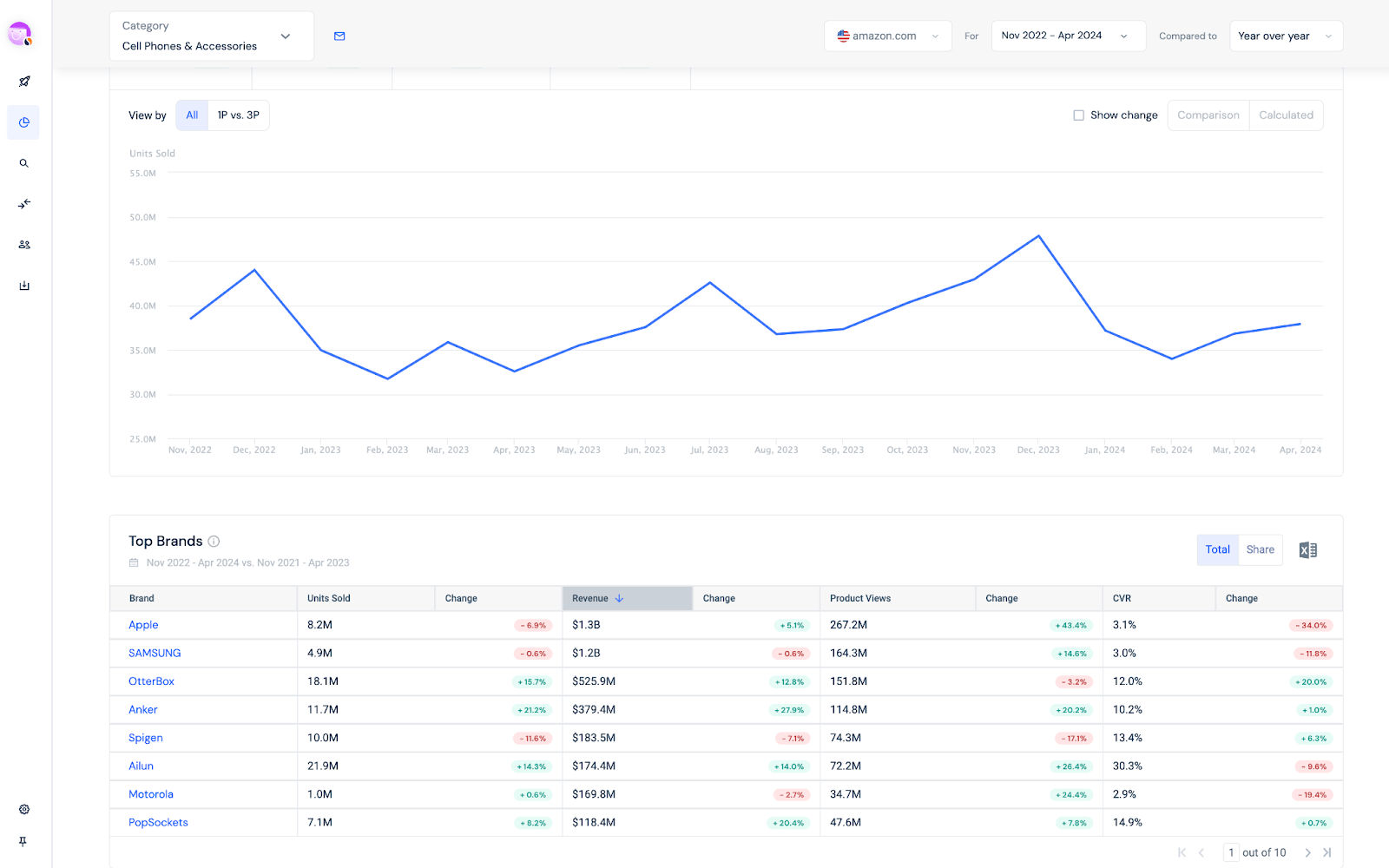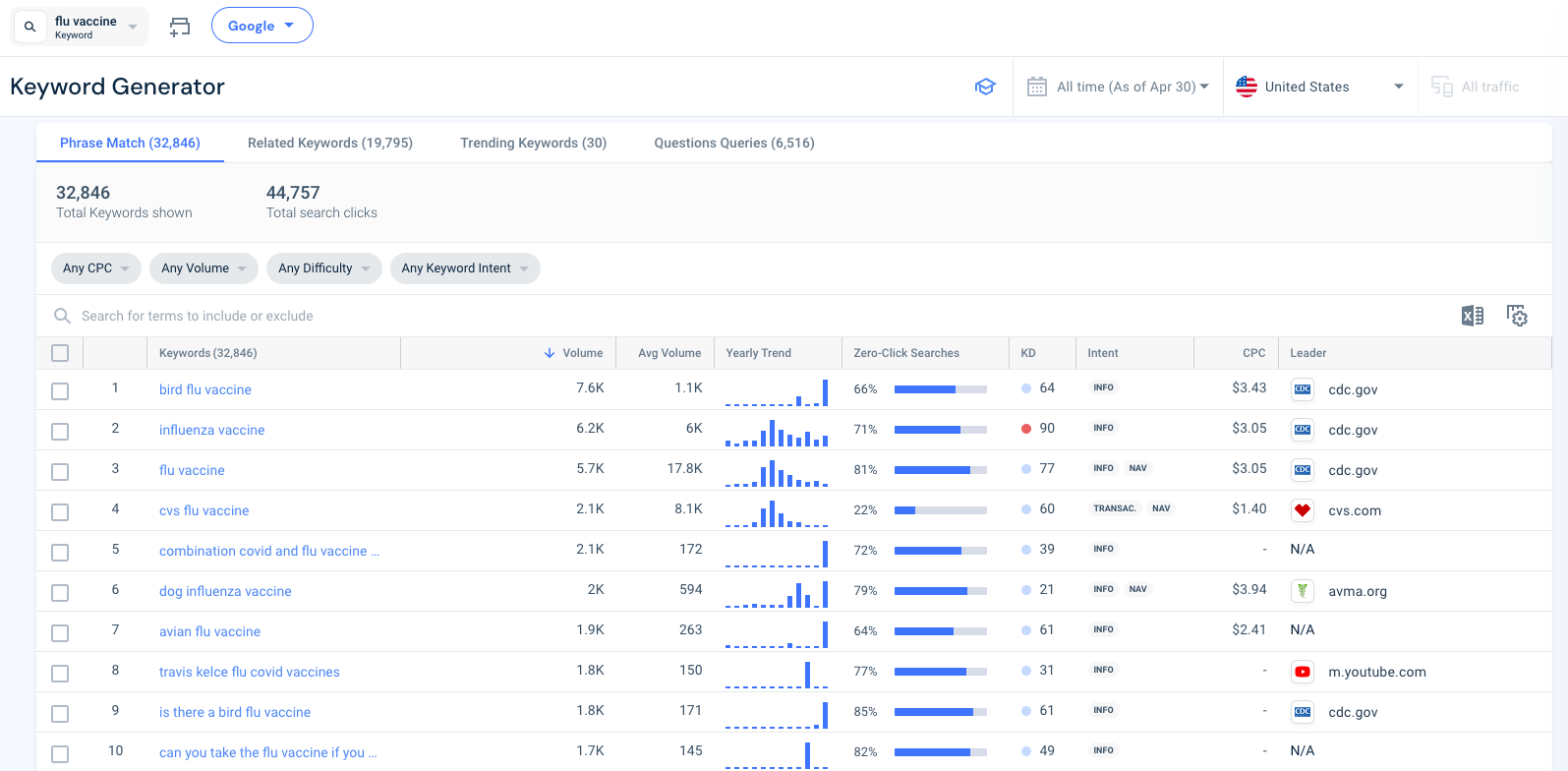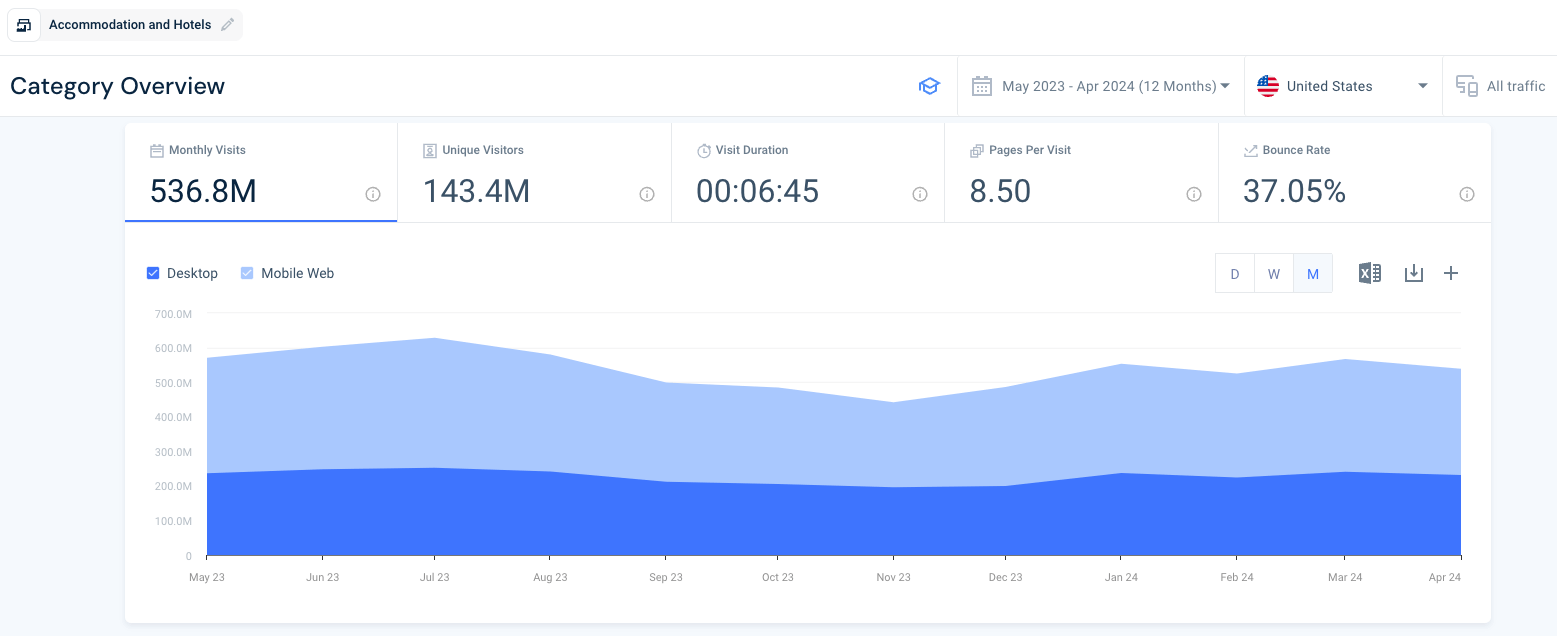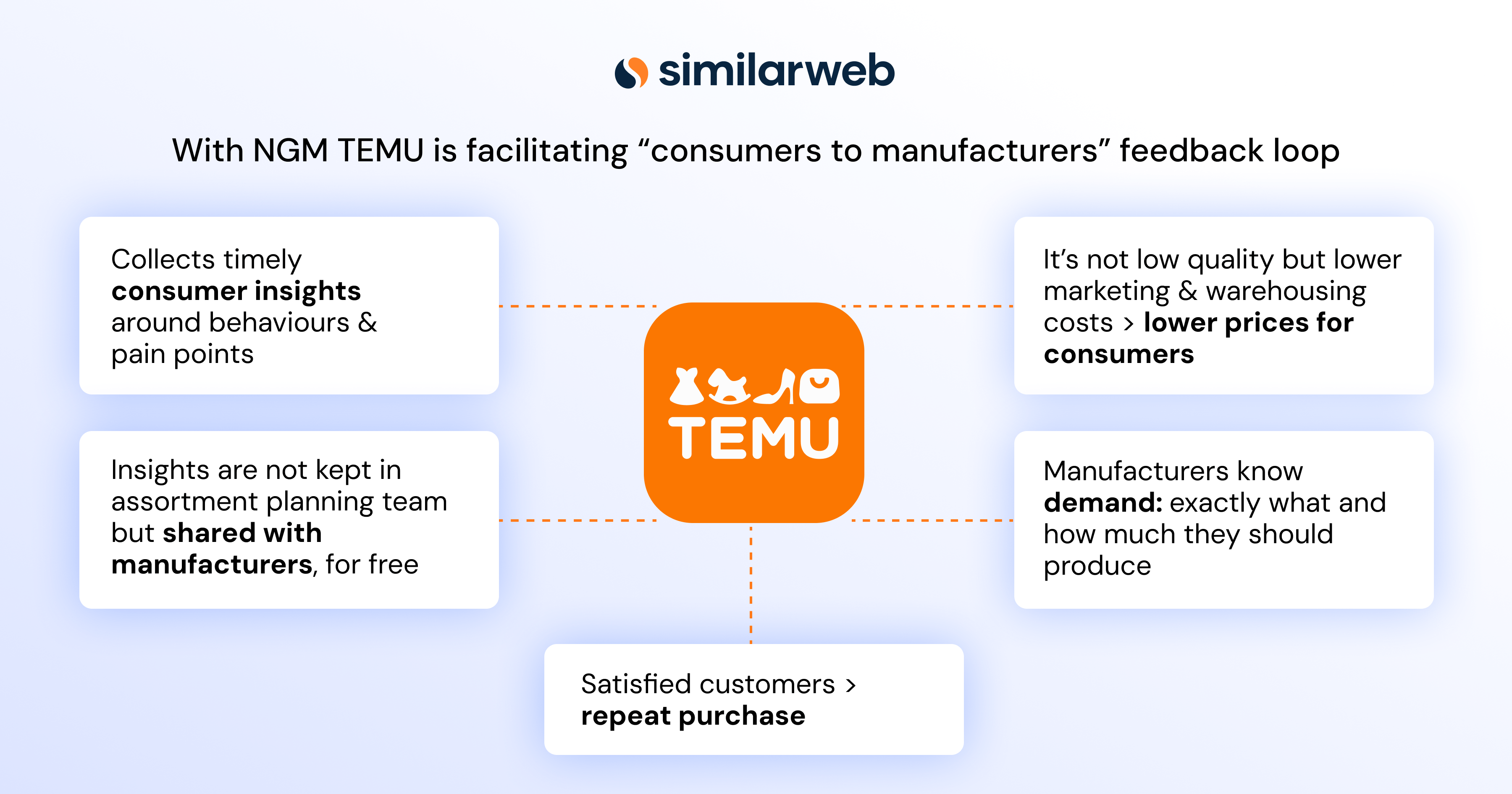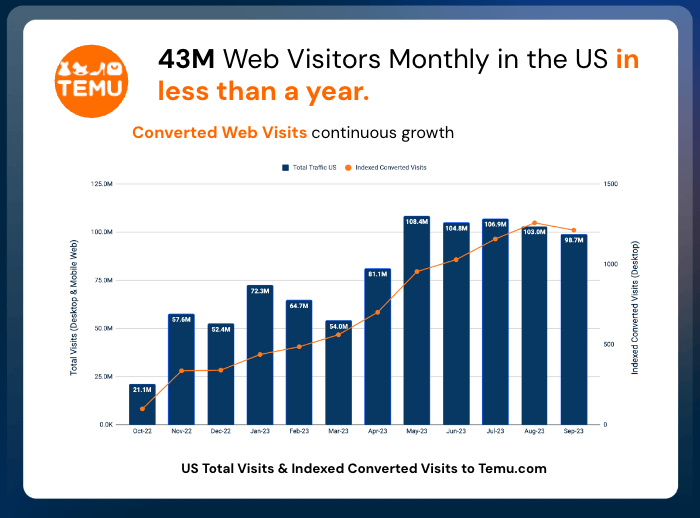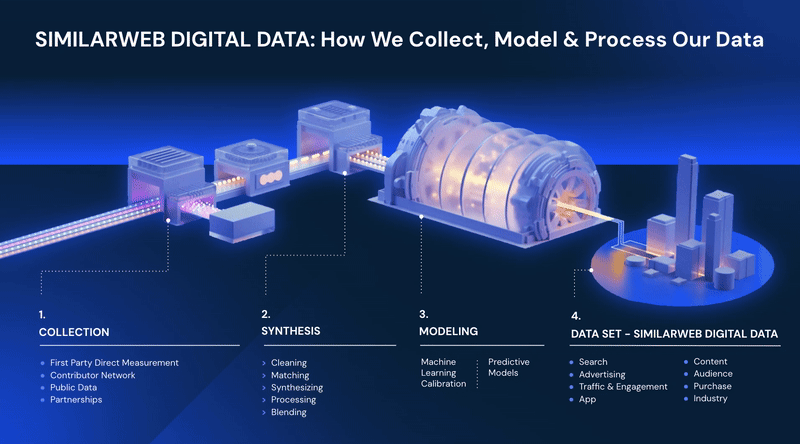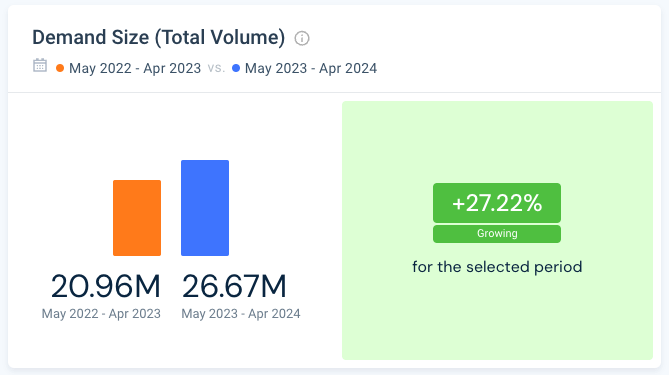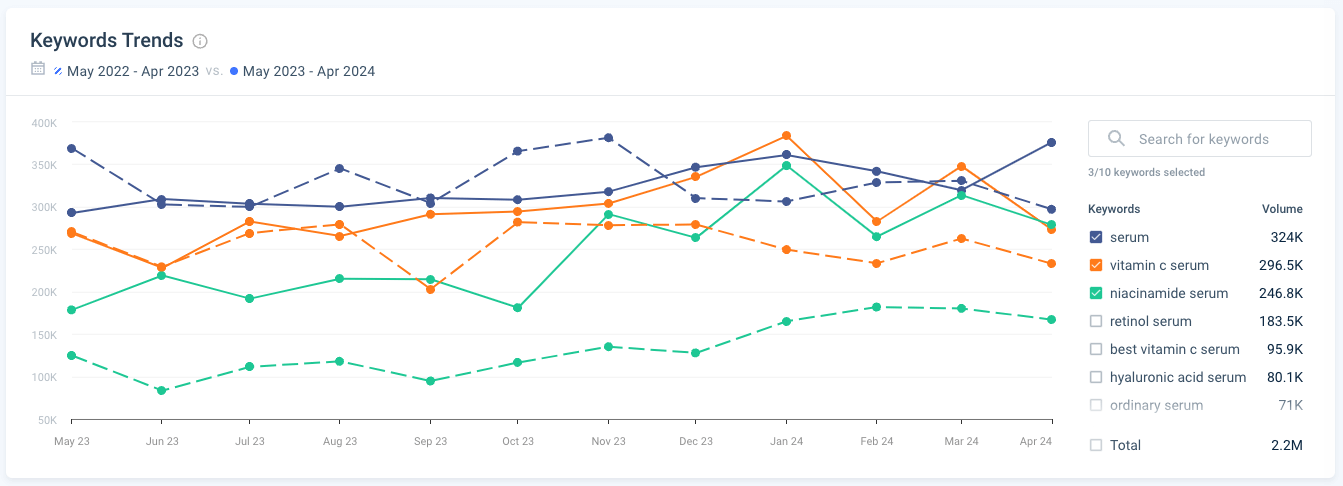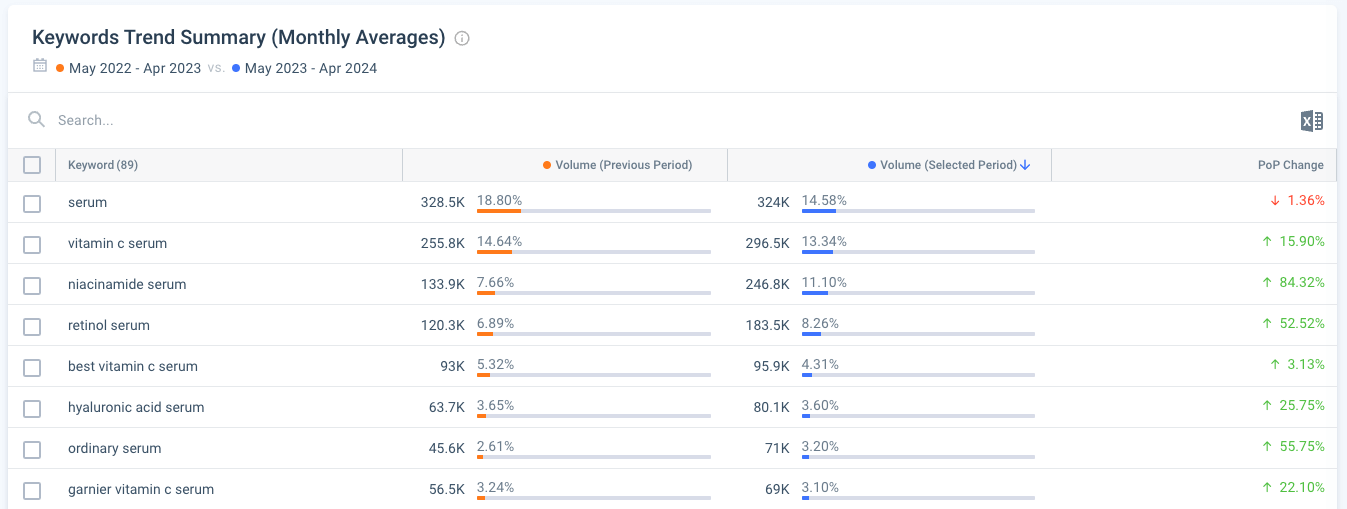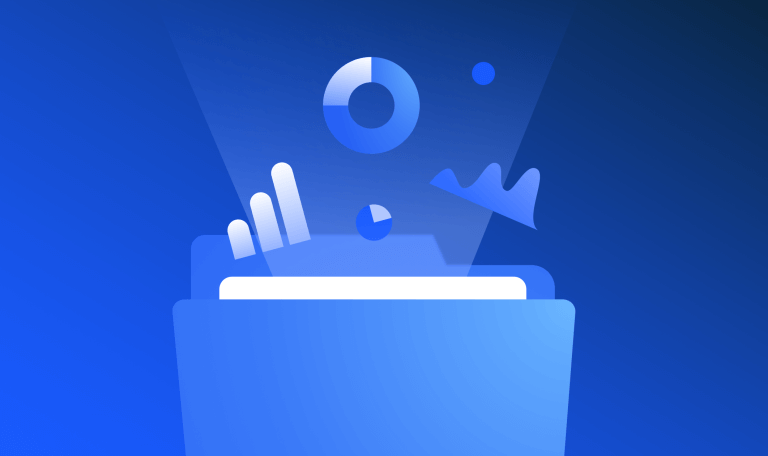Demand Forecasting 101: How to Predict Future Demand For Your Products
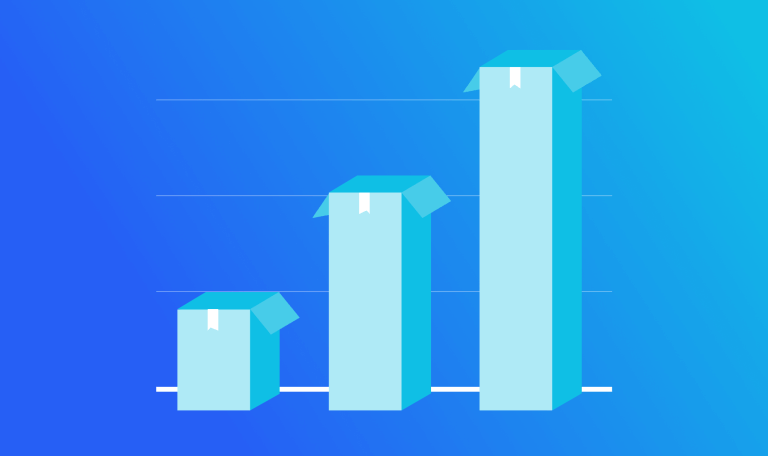
Imagine predicting what your customers want before they even know they want it. Sounds too good to be true, right?
But it’s possible with ✨ demand forecasting. ✨
Anticipating future demand for your product or service – and getting it right – is crucial to your business’s bottom line, especially if you’re in an industry where product demand can change radically.
Ready to learn how to predict the future? No crystal ball needed. Just the right market research tools.
Dive into our comprehensive guide on demand forecasting, including what it is, why it’s so important, as well as its key types, methodologies, and significant impact on business operations.
What is demand forecasting?
Demand forecasting is the process of anticipating the future demand for a product or service, based on historical data and current market trends, and using various statistical tools.
It’s about understanding what most influences buyer behavior and shapes market conditions. This includes aspects like seasonal consumer shifts, economic factors, consumer trends, and competitor moves.
Demand forecasting models can range from simple qualitative assessments for new products, to complex quantitative systems that use advanced algorithms based on a wealth of historical product data. But we’ll get into that a bit later.
The importance of demand forecasting
You may think that demand forecasting is all about inventory management, but it extends way beyond that to influencing some of a business’s most strategic decisions. Here are some of the reasons demand forecasting is so important:
⭐️ Key decision-making tool that helps businesses make strategic decisions with confidence
⭐️ Acts as a roadmap to help navigate an uncertain future
⭐️ Helps businesses adapt to both short and long-term shifts in the market
⭐️ Unites all functions within a business with a unified vision of what’s coming next
⭐️ Helps maintain competitiveness by staying one step ahead of key trends
⭐️ Ensures resilience in rapidly changing market conditions
6 Key benefits of demand forecasting
The benefits of demand forecasting range from practical to tactical advantages that directly influence a business’ efficiency (and bottom line ).
Demand forecasting benefits include:
Better inventory management
Better inventory control is probably the most tangible benefit of accurately predicting product demand. It helps businesses match stock levels to meet demand without over- or under-producing – saving costly inventory excesses, unnecessary storage space, and product shortages.
Too much stock drains capital while low stock levels mean missed sales opportunities and may damage customer satisfaction. Accurately predicting product demand helps businesses ensure products are available when customers need them.
Supply chain efficiency
Being able to predict product demand is what underpins supply chain management – everything from production planning to distribution. Product demand foresight helps businesses allocate resources more efficiently, which in turn, minimizes waste and cuts costs. This precision is especially important in industries where products have a short shelf life, like food and pharmaceuticals.
Maximizing revenue
What does better inventory management and supply chain efficiency lead to? A boost in revenue. With resources efficiently allocated and the equilibrium of product demand maintained, there’ll be fewer stockouts and lost sales, and the ability to capitalize more on peak demand periods.
Customer satisfaction
Anticipating customer wants and needs helps businesses align their products, pricing, promotions and sales strategies with the demands of their target audience. This proactive strategy means that customers receive the right products, at the right time, and in the right way. It goes a long way in forging strong relationships with customers and boosting loyalty and retention.
Risk reduction
When faced with volatile market conditions, new technological leaps and unpredictable economic shifts, the ability to predict market demand can really help businesses navigate through the maze of uncertainty. This is particularly important in industries that are affected by seasonal demand (like fashion), so misjudging future market trends can be detrimental.
Strategic market positioning
With a good grasp on future trends and changing consumer behaviors, businesses have more time to innovate and launch new products at the most opportune time – gaining that crucial competitive advantage.
Demand forecasting – 5 easy to follow examples
Example #1: Predicting seasonal demand in retail ️️
In the retail industry, particularly for clothing and accessories brands, demand forecasting is absolutely crucial for seasonal product planning. These businesses use historical sales data, market trends and emerging fashion forecasts to anticipate which products will be in high demand. This helps control inventory levels and meet customer demand.
See here an overview of the ‘Fashion and Apparel’ industry using Similarweb’s Web Category Analysis feature. You can see the trend of monthly visits to this category over time, as well as useful metrics like the average visit duration, pages per visit and bounce rate for this industry to use as a benchmark.
Example #2: Launching a new product in the market in tech
In the volatile tech industry, launching new products (and getting it right) can be tricky. When launching innovative products, there isn’t much previous data on what the demand for a novel product will be.
So, companies like Apple and Samsung use demand forecasting to estimate initial customer demand based on market research, competitor analysis and previous similar product launches.
With Similarweb Shopper Intelligence, you can track brand sales performance on Amazon’s marketplace across products, categories, demographics, and much more.
Example #3: Predicting the need for healthcare in pharma
Tasked with something so important as our health, pharmaceutical companies must accurately predict the need for medications and vaccines. These types of companies forecast demand based on things like disease prevalence and seasonal outbreaks.
The flu vaccine is a great example. Pharma companies must accurately predict demand for flu vaccines before the flu season begins to help manage production and distribution plans. This means that vaccines are available when and where they are needed most.
Using Similarweb’s Keyword Generator, you can see the search volume and yearly trend of the ‘flu vaccine’ keyword, along with other related keywords.
Example #4: Power generation and distribution in energy ⚡️
Utility companies use demand forecasting to predict energy consumption patterns, which is extremely important in managing power generation and distribution. If they know when energy consumption peaks, they can adjust their production to ensure grid stability and operational efficiency.
As the renewable energy sector grows, more sophisticated demand forecasting is needed to combat the changeable nature of wind and solar power.
Example #5: Booking and staffing in hospitality
Hotels don’t want empty rooms. That’s why hospitality businesses use demand forecasting to predict room occupancy rates, to aid their pricing and promotional strategies. They must understand aspects like peak travel seasons and local event popularity so they can manage staffing and pricing to ensure maximum revenue, optimal occupancy and of course, guest satisfaction.
By analyzing web visits to the ‘Accomodation and Hotels’ industry on Similarweb, you can make out the seasonal trend where traffic peaks between June and September, and then again in January and March.
Demand forecasting types
Demand forecasting can be segmented into different types, each tailored to specific business needs and market conditions. By understanding each type, businesses can gauge the most appropriate way to predict demand, as accurately as possible. Here are the primary types of demand forecasting:
Passive demand forecasting
This type of demand forecasting is best suited for businesses with a stable, unchanging market environment. This is because it relies on historical data to predict future demand, so it helps if past trends continue on largely unchanged. Passive demand forecasting is ideal for small businesses or those who are not planning to expand in the near future.
Active demand forecasting
In direct contrast to passive forecasting, active demand forecasting is ideal for businesses undergoing a period of rapid growth or making significant changes to their market strategies. Active forecasting incorporates real-time factors like market chances, economic trends and any planned marketing efforts to predict future demand.
Short-term demand forecasting
This type of demand forecasting is focused on making predictions in the immediate future, generally up to a year. It uses more detailed, real-time data to provide accurate and actionable insights, and is particularly important for operational decisions like workforce planning and inventory control.
Long-term demand forecasting
Of course, long-term forecasting is more concerned with making predictions over a longer period, usually more than a year. This type of demand forecasting is vital for strategic planning, capacity planning, capital investment and long-term budget allocation and relies on broader market analysis and macroeconomic data to predict future demand.
External macro forecasting
This type of forecasting looks outside the company to the broader economic environment. It analyzes how macroeconomic factors such as GDP growth rates, industry trends, and governmental policies might influence demand. External macro forecasting is crucial for adjusting business strategies to align with economic forecasts.
Internal business forecasting
Internal business forecasting focuses on a company’s internal data, such as sales and marketing performance metrics. This type can be very detailed, focusing on specific products, regions or market segments. It helps businesses optimize their internal processes and resource allocation based on expected demand levels.
Demand forecasting methods
To get the fullest possible picture of future demand, businesses may choose to use a wide variety of demand forecasting methods. These usually fall into two broad categories: quantitative and qualitative, and each has a different approach and its own unique benefits. Let’s explore some of the most commonly used demand forecasting methods:
Quantitative demand forecasting
Time series analysis
These demand forecasting methods look at past sales data to help predict future sales.
Moving averages
This is a type of analysis that is useful for smoothing out short-term fluctuations in demand and highlighting longer-term trends. For example, it’s much like looking at your last four weekends of lemonade sales and averaging them to predict demand for the upcoming weekend. This helps smooth out any weird highs or lows (like if it was very hot one weekend and people wanted lemonade more than usual).
Exponential smoothing
This applies weighting factors that decrease exponentially over time and is ideal for data that does not have seasonal variations. Let’s use our lemonade example again. Instead of treating all past weekends of selling lemonade the same, it gives more importance to the more recent weekends. It’s like saying, “What happened last weekend tells me more about next weekend than what happened a month ago.”
AutoRegressive Integrated Moving Average (ARIMA)
This works with both stationary and non-stationary data as it models the dependencies in data points. To put it simply, it’s like a very smart calculator that not only looks at your past sales but also how your sales have been changing over time. It’s great for figuring out purchasing patterns that are a lot more complicated.
Casual models
These are like detective methods where you figure out what factors affect your lemonade sales. Is it the weather? The price?
Regression analysis
This method is used to forecast demand based on the relationship between the dependent variable (demand) and one or several independent variables like price, income level, or weather. It’s like saying, “When it’s hotter, I sell more lemonade” but using calculations to figure out exactly how much more you sell when the temperature goes up.
Econometric models
This works similarly to regression, but also includes simultaneous equations with multiple independent relationships. It’s a lot more complex as these models look at many different things at once, like how weather, prices, and maybe even how many people walk by your stand can affect your sales.
Machine learning models
These models use complex algorithms to predict future trends and behaviors by analyzing large amounts of data. These models can find patterns that are too subtle or complex for humans to spot.
Decision trees
Imagine you’re using a flowchart to decide whether to go out or stay in on a weekend. This chart might include questions like “Is it raining?” or “Are my friends available?” leading to outcomes of either “stay in” or “go out”. Decision trees in forecasting work in a very similar way. They split data into branches to help predict outcomes like sales volumes. They’re great for situations where relationships in the data aren’t straightforward (non-linear).
Neural networks
This method is inspired by the human brain and consists of layers of “neurons” that process data. Here, each “neuron” specializes in understanding a part of the data. They pass their insights onto the next layer to gradually form a detailed understanding. Neural networks are fantastic for dealing with very complex data sets, like predicting the demand for a new product based on social media trends and global economic conditions.
Ensemble methods
This technique combines the strengths of multiple models to improve accuracy. It’s like when a group of experts each makes a forecast, and then their insights are blended to form a final, more accurate prediction. Techniques such as Random Forests and Gradient Boosting are used here. Random Forests use many decision trees to make a decision collectively, while Gradient Boosting improves predictions incrementally by learning from the mistakes of previous models.
Qualitative demand forecasting
Unlike quantitative demand forecasting, this type of demand forecasting doesn’t rely on numbers and data, but instead on opinions, judgments and insights from industry experts. These are usually used when quantitative data is absent or lacking.
Delphi method
This is a structured communication technique, originally developed as a systematic, interactive forecasting method which relies on a panel of experts.
Each expert independently provides forecasts based on their knowledge, and their responses are anonymous. The results are compiled and shared, and the experts then have the option to revise their forecasts. This cycle is repeated until a closer consensus is reached.
Market research
Market research involves diving deep into what consumers think and want. Imagine you’re planning to launch a new app. Before you develop it, aside from carrying out app analysis, you’d conduct other types of market research like surveys, focus groups, or interviews with potential users to understand what features they want, how much they would pay, or what would make them choose your app over others.
This direct feedback, coupled with the app intelligence you gather, helps predict how well your product will be received and tailor it to meet the market’s demands effectively.
We’ve barely skimmed the surface of market research – a truly powerful and essential part in the process of understanding market demand for a product service. Dive deeper and learn about primary market research, secondary market research as well as quantitative market research and qualitative market research.
Salesforce composite
This method taps into the insights of your sales team. Each salesperson predicts their future sales based on their daily interactions with customers. These predictions are then aggregated to form a comprehensive view of expected sales for the entire company.
Expert opinion
At the heart of the third method is the opinions of people with significant experience or expertise in the industry to forecast demand, often combined in a workshop setting. It’s similar to asking a panel of professors about the potential impact of a new trend in their field.
In business, it involves consulting with industry veterans or experts to get their perspectives on future market trends or demand. Their seasoned insights are especially useful for new or rapidly evolving markets where historical data might be scarce or irrelevant.
Historical analogy
This qualitative demand forecasting method looks at how similar events or products fared in the past to predict how a new product might perform. For example, if a company like samsung.com wanted to release a new type of smartphone, they might look at the launch data of similar devices to estimate how well the new product will do. It’s about learning from the past to make smarter decisions in future.
Advanced demand forecasting techniques
These advanced techniques aim to provide a deeper understanding of market dynamics and consumer behavior, so businesses can make smarter decisions that align closely with future market conditions.
Next generation manufacturing (NGM)
NGM, an advanced form of machine learning quantitative demand, uses cutting-edge algorithms, data processing techniques and artificial intelligence to understand and forecast consumer demand with next-level precision.
How about a real-life example of NGM in action?
We’ve all been in awe of Temu’s colossal success since its launch in late 2022. It’s now a huge contender for ecommerce giants like Amazon, Etsy, and Shein. What’s their secret weapon? It’s NGM.
Temu collects 1st party behavioral consumer insights at scale, tracking what their target audience is searching for in real-time, as well as gathering data on their biggest needs and pain points. These insights are openly shared with manufacturers so they can more accurately anticipate demand, boost their product innovation and monetize trends quicker than their competitors.
With NGM, Temu facilitates a ‘consumers to manufacturers’ feedback loop that helps them both anticipate demand and hit major consumer pain points:
This means no waste, quicker turnaround time, lower warehouse costs and less marketing spend. The cost saving is then passed onto consumers, making their products cheaper than their closest competitors’ – a crucial competitive advantage it’s reaping the benefits from.
The result? Consumer needs are fulfilled, and a horde of satisfied customers will keep coming back to Temu – who seem to already know what consumers will be looking for next.
Here’s how temu.com visits grew in just one year from its launch in September 2022:
There’s also a world of insight beyond 1st party data that businesses can leverage to try and capture demand as quickly as possible, including:
- Consumer searches in Google (top of the funnel demand)
- On-Site searches in marketplaces (demand at the consideration and evaluation stage)
- Custom traffic categories (your competitors’ 1st party data)
Simulation models
Virtual models are made of the market and different ‘what if’ scenarios are run through it to see how things like consumer behavior or price changes. This helps businesses prepare for lots of possible outcomes and plan strategies accordingly.
Big data analytics
By using advanced technology to analyze huge volumes of data from different sources, businesses can uncover hidden patterns, correlations, and insights that aren’t visible with smaller datasets. This comprehensive view allows for more accurate predictions of what customers will want in the future, helping companies to be more proactive and precise in stocking products and planning marketing campaigns.
How to forecast demand using Similarweb
You don’t have to rely on some of the more traditional methods of forecasting we mentioned earlier in this article. Instead, you can use Similarweb’s dedicated Demand Analysis feature to get a 360-degree view of your market and the scoop on what consumers really want, based on the freshest, most accurate market research data.
Similarweb taps into real online searches, consumer behavior and click data to help you better understand and predict demand for a particular topic in your market. We use customizable keyword lists to dive deep into your market niche and track demand fluctuations over time, so you can anticipate future trends like a pro.
With Similarweb you’ll bid farewell to guesswork and say hello to data-driven decision making based on real-time consumer behavior – just like some of the more advanced demand forecasting methods we discussed earlier.
Let’s walk through an example of our Demand Analysis tool in action:
Beauty brands are always looking to understand skincare trends to accurately forecast demand and optimize their serum product offerings for maximum revenue and growth.
For example, with the increasing awareness of the importance of skincare, consumers are now focusing more on specialized facial serums that cater to their individual skin needs. So, a skincare brand aiming to predict demand and manage inventory might consider investing in serums that address hydration, anti-aging, and brightening, as these are becoming integral to many beauty routines.
Using the Similarweb Demand Analysis feature, let’s assess the demand for ‘facial serums’ and see if there are any emerging trends that skincare brands should be capitalizing on:
We can see that demand for the topic of ‘serums’ is increasing with almost 30% year-over-year (YoY) growth in demand for serum products.
Next, let’s look at the demand trend over time and see which serums are the most popular:
Here, the beauty brand can glean a few key insights into product demand popularity and seasonality:
- Serums containing vitamin C and niacinamide (a form of vitamin B3) are the most popular in 2024. But, other ingredients like retinol and hyaluronic acid are also growing in demand.
- Serums with niacinamide have seen significant growth from 2023 to 2024, with an impressive 111% YoY growth in January 2024 compared to January 2023. Vitamin C serums follow closely behind with a 53% YoY growth.
- The winter months appear to be an increasingly popular time for serums, with many of the top keywords peaking in January 2024. This trend suggests that consumers are likely seeking products to combat the effects of cold weather on their skin, such as dryness and irritation.
- Skincare brands should consider planning their campaigns and product launches to align with this increased interest during the winter months. Starting promotions and highlighting the benefits of serums with niacinamide and vitamin C in the fall could help drive sales and maximize profitability during peak interest periods.
- The significant growth in demand for niacinamide serums suggests a strong future trend. Skincare brands should consider focusing on developing and promoting products that feature niacinamide prominently. Additionally, maintaining a robust product line that includes other popular ingredients like vitamin C, retinol, and hyaluronic acid will help capture a broader audience.
We can see these findings are supported by recent ‘serum’ keyword trends on Demand Analysis:
Search volume for ‘niacinamide serum’ and ‘retinol serum’ saw 84% and 52% YoY, respectively, and it’s clear ‘vitamin c serum’ and ‘hyaluronic acid serum’ keyword search volume is also on the rise.
For skincare brands, the data gleaned from Demand Analysis gives a clear understanding of consumer preferences, allowing for more precise demand forecasting, and helping to identify the most effective campaign seasonality and product ingredients to promote.
With Demand Analysis, brands are given a holistic view of consumer behavior from search queries to clicks, helping to bridge the gap between stated interest and actual purchasing intent.
That’s a wrap on demand forecasting
Demand forecasting is pretty much your golden compass amidst the ever-changing landscape of consumer preferences and market conditions.
With demand forecasting, you can better predict future demand for your products and services, leading to data-driven decision making, cost-effective and streamlined operations, and most importantly, a crucial competitive advantage.
And Similarweb’s Demand Analysis feature will help you get there. With real-time online searches, consumer behavior, and click data at its heart, our Demand Analysis tool helps paint a robust view of demand in your market niche, anticipate future trends and capitalize on every emerging opportunity.
FAQs
What is demand forecasting?
Demand forecasting is the process of predicting future demand for a product or service using historical data, market trends, and statistical tools. It involves analyzing factors that influence buyer behavior and market conditions, such as seasonal consumer shifts, economic factors, and competitive actions.
Why is demand forecasting important for businesses?
Demand forecasting is crucial as it serves as a key decision-making tool for strategic business decisions. It provides a roadmap for navigating uncertain futures, helps businesses adapt to market shifts, aligns all functions within a business with a unified vision, maintains competitiveness, and ensures resilience in rapidly changing market conditions.
What are the main types of demand forecasting?
Demand forecasting can be divided into several types, including passive and active forecasting, short-term and long-term forecasting, and internal versus external macro forecasting. Each type caters to different business needs and market conditions, helping businesses predict demand as accurately as possible.
How can I use Similarweb to forecast demand for my product or service?
Similarweb offers tools like the Demand Analysis feature, which taps into real-time online searches, consumer behavior, and click data to provide a comprehensive view of market demand. This tool allows businesses to use customizable keyword lists to track and predict demand fluctuations over time, aiding in more accurate and data-driven decision-making.
Track your digital metrics and grow market share
Contact us to set up a call with a market research specialist
